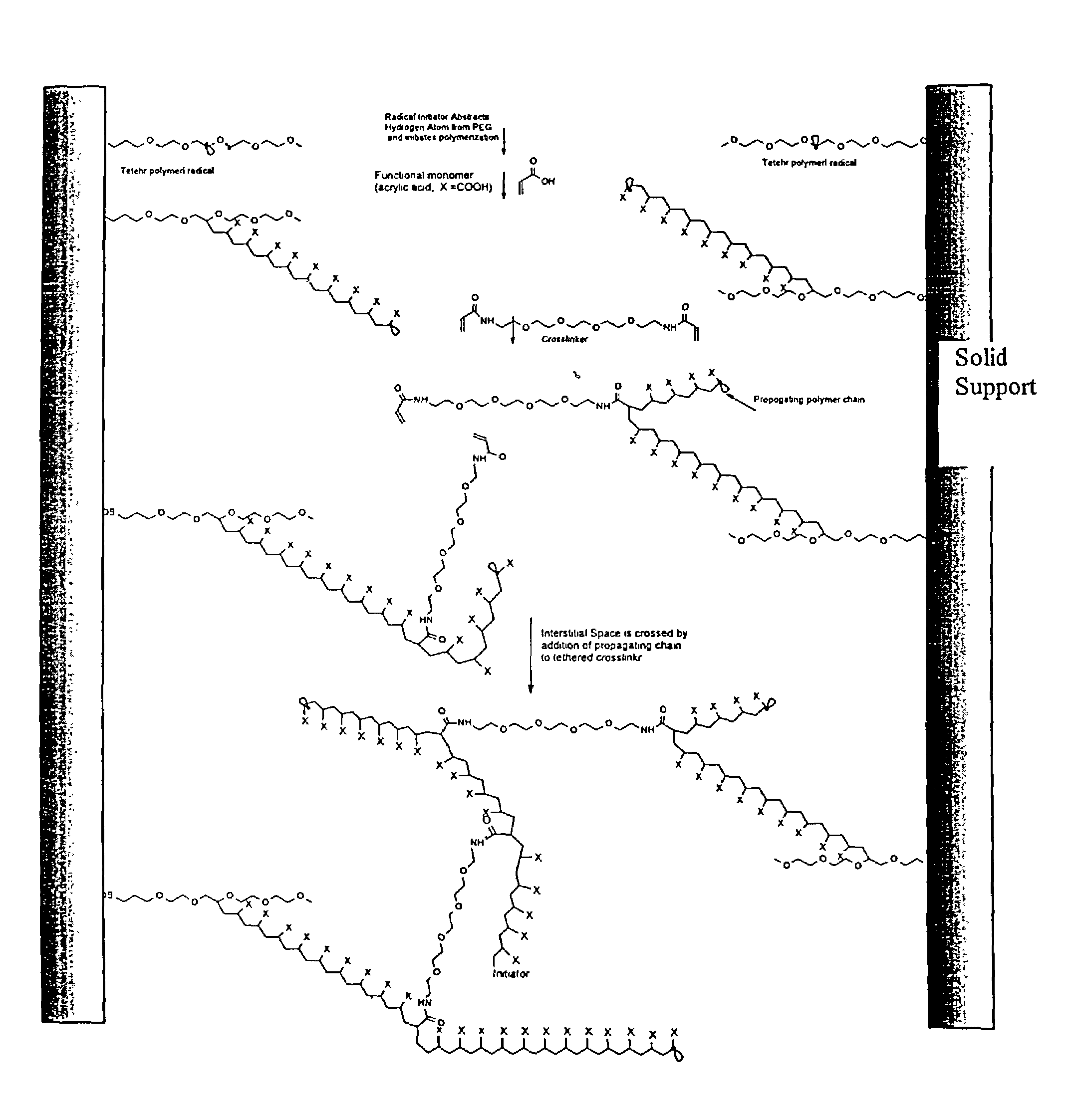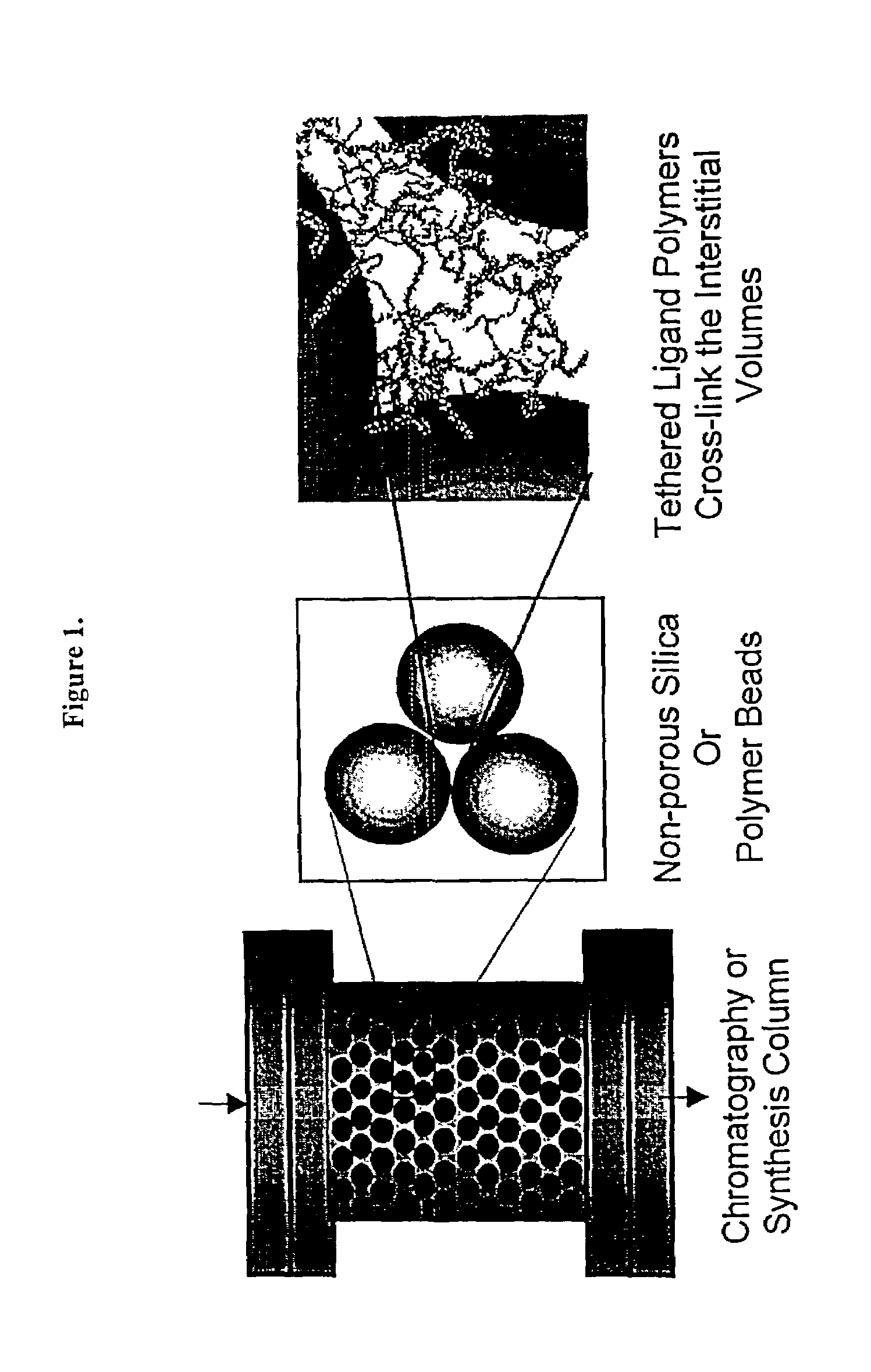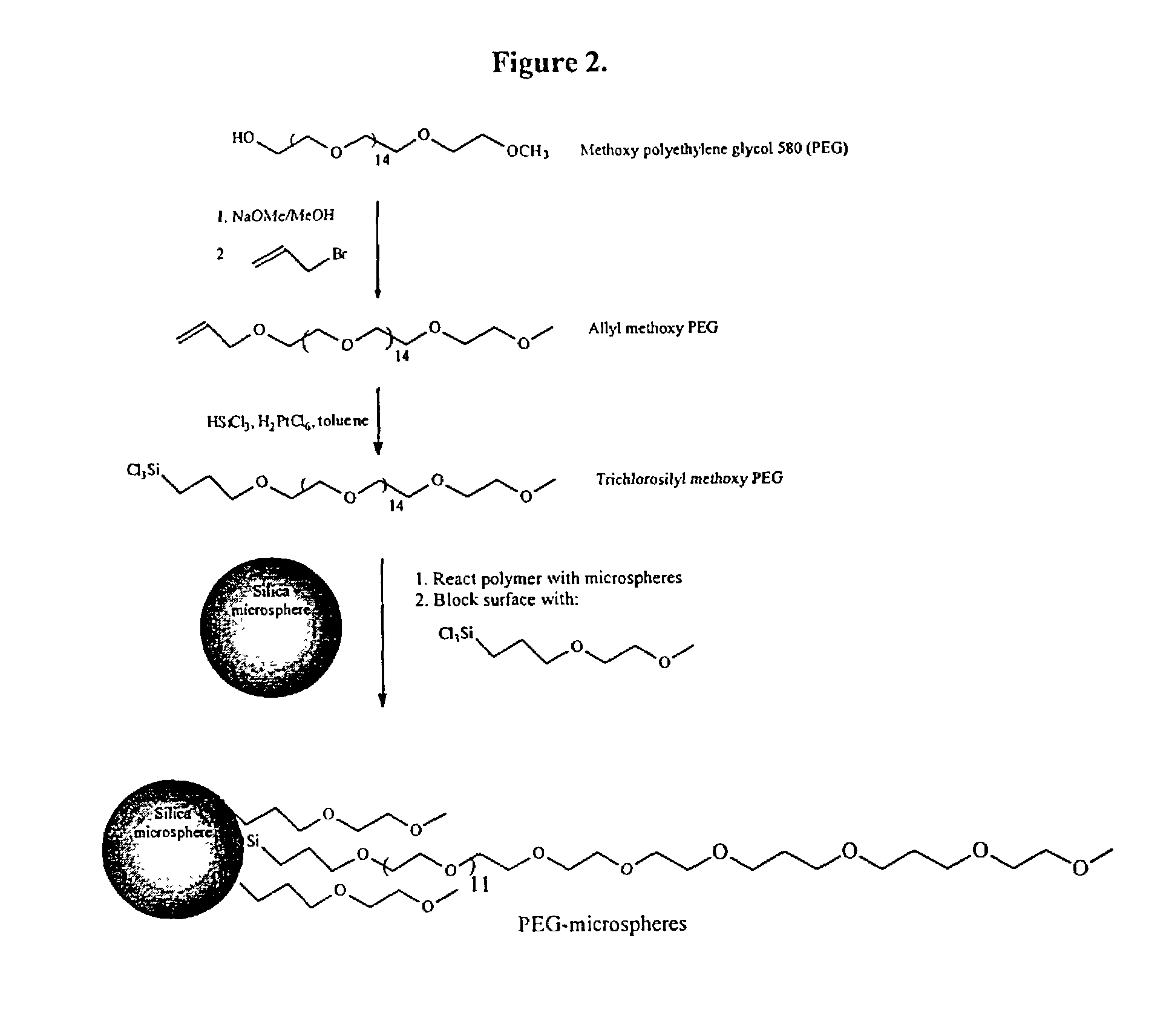Composite matrices with interstital polymer networks
a polymer network and composite matrice technology, applied in the field of composite matrices with interstital polymer networks, can solve the problems of affecting the performance of the field, the time cost of slow analysis, and the limited rate of equilibration between the stationary phase and the solute molecule, and achieve the effect of high throughput screening separation
- Summary
- Abstract
- Description
- Claims
- Application Information
AI Technical Summary
Benefits of technology
Problems solved by technology
Method used
Image
Examples
example 1
Preparation of Trichlorosilyl Activated Polyethylene Glycol
[0106]Methoxypolyethylene glycol 580 (37.5 grams, 65 mmoles) was dissolved in 125 ml methanol and deprotonated with sodium methoxide (4.22 grams, 78 mmoles). When the sodium methoxide had dissolved, 7.0 ml of allyl bromide (9.8 grams, 81 mmoles) was dripped into the reaction mixture with a dropping funnel. The mixture was stirred overnight and was filtered into a 500 ml round bottom flask. The solvent was removed by a rotary evaporator and redissolved in 150 ml of toluene. The suspension was filtered and evaporated to give 40 grams of an oil, the allylmethoxy polyethylene glycol. Toluene (88 ml) was added to the residue and a 6.2 ml of a 0.01 molar solution of chloroplatinic acid in tetrahydrofuran was added. Trichlorosilane (6.2 ml) was added and the reaction was stirred overnight under a nitrogen atmosphere. It was heated to 55 degrees for two hours and then cooled and stored under nitrogen in the refrigerator. The reactio...
example 2
Preparation of Trichlorosilylpropyl Ethylene Glycol Methyl Ether
[0107]Ethylene glycol monomethyl ether (352 grams) was dissolved in 210 ml ether and deprotonated with 235 grams sodium methoxide. When the sodium methoxide had reacted, 400 ml of allyl bromide was dripped into the reaction mixture with a dropping funnel. The mixture was stirred overnight and poured into water. Saturated sodium chloride was added and the water was extracted 3 times with ether (200 ml). The ether was dried over magnesium sulfate and was filtered into a 1000 ml round bottom flask. The solvent was distilled off by a rotary evaporator and the allyl ether was redissolved in 200 ml of toluene. An 8 ml solution of chloroplatinic acid (8 mg / ml in tetrahydrofuran) was added. Trichlorosilane (72 ml) was slowly added by dropping funnel and the reaction was stirred overnight under a nitrogen atmosphere. The solution was heated to 55 degrees for two hours and then cooled and stored under nitrogen in the refrigerator...
example 3
Preparation of 10 Micron Polyethylene Glycol-Modified Silica
[0108]Hollow glass spheres (Aldrich, 11 micron, 105.4 g) were placed in a 500 ml round bottom flask and dried in an oven controlled at 150C for 12 hours. The flask was removed from the oven, stoppered, and cooled to room temperature under nitrogen. Toluene (160 ml) and 20 ml of the reagent prepared in Example 1 were added. Triethylamine (2.5 ml) was added and the flask was then agitated by rotation for 12 hours at room temperature. The reagent solution from Example 2 (10 ml) was added and the flask was rotated for another 4 hours at room temperature. The reaction mixture was filtered on a coarse fritted glass funnel and washed three times each with 100 ml portions of methanol, ether, methanol, and ether. FIG. 2 shows the reactions and indicates the coating of the nonporous spheres.
PUM
| Property | Measurement | Unit |
|---|---|---|
| Nanoscale particle size | aaaaa | aaaaa |
| Nanoscale particle size | aaaaa | aaaaa |
| Hydrophilicity | aaaaa | aaaaa |
Abstract
Description
Claims
Application Information
 Login to View More
Login to View More - R&D
- Intellectual Property
- Life Sciences
- Materials
- Tech Scout
- Unparalleled Data Quality
- Higher Quality Content
- 60% Fewer Hallucinations
Browse by: Latest US Patents, China's latest patents, Technical Efficacy Thesaurus, Application Domain, Technology Topic, Popular Technical Reports.
© 2025 PatSnap. All rights reserved.Legal|Privacy policy|Modern Slavery Act Transparency Statement|Sitemap|About US| Contact US: help@patsnap.com



